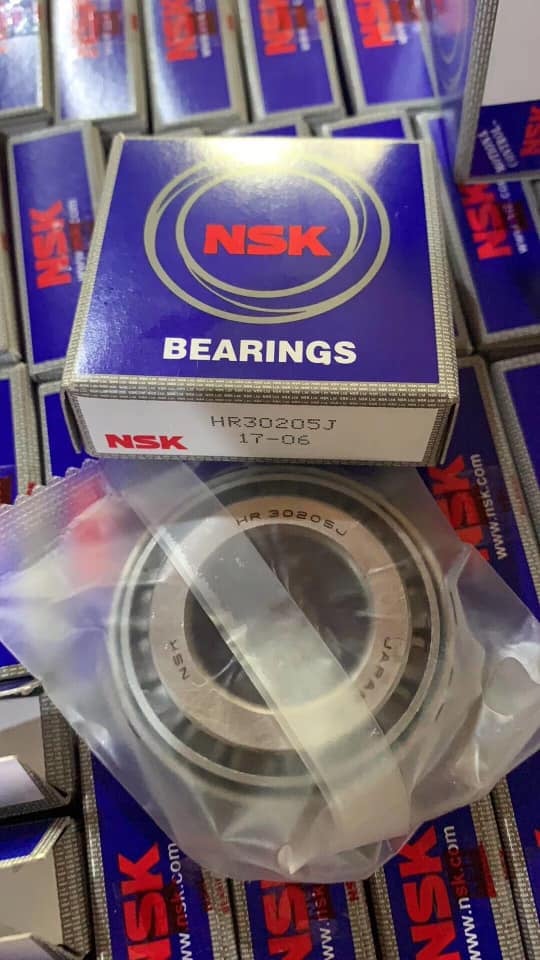
 News
NewsAccording to the formation mechanism of the degraded layer on the working surface of NSK tapered roller bearings, the main factors affecting the degraded layer are the effects of grinding heat and grinding force. Let's analyze the reasons for the failure of NSK tapered roller bearings.
Grinding heat of NSK tapered roller bearings
In the grinding process of NSK tapered roller bearings, a large amount of energy is consumed in the contact area between the grinding wheel and the workpiece, and a large amount of grinding heat is generated, resulting in a local instantaneous high temperature in the grinding area. Using linear motion heat source heat transfer theory formula to derive, calculate or use infrared method and thermocouple method to measure the instantaneous temperature under experimental conditions, it can be found that the instantaneous temperature of the grinding zone can be as high as 1000-1500℃ within 0.1-0.001ms. Such instantaneous high temperature is sufficient to cause high-temperature oxidation, amorphous structure, high-temperature tempering, secondary quenching, and even burn and cracking of the surface layer at a certain depth of the working surface.
(1) Surface oxide layer
The steel surface under the action of instantaneous high temperature reacts with oxygen in the air, and it rises into a very thin (20-30nm) thin layer of iron oxide. It is worth noting that there is a corresponding relationship between the thickness of the oxide layer and the total thickness of the surface ground modified layer. This shows that the thickness of the oxide layer is directly related to the grinding process and is an important indicator of grinding quality.
(2) Amorphous structure layer
When the instantaneous high temperature of the grinding zone makes the surface of the workpiece reach a molten state, the molten metal molecular stream is evenly coated on the working surface, and is cooled by the base metal at a very fast speed, forming a very thin layer of amorphous state Organizational level. It has high hardness and toughness, but it is only about 10nm, which can be easily removed in precision grinding.
Click here to buy NSK HR30205J. Eric Bearing LTD has enough stock for it.

(3) High temperature tempered layer
The instantaneous high temperature in the grinding zone can heat the surface to a temperature higher than the tempering heating temperature of the workpiece within a certain depth (10-100nm). In the case of not reaching the austenitizing temperature, as the heated temperature increases, the surface layer will undergo a re-tempering or high-temperature tempering structural transformation corresponding to the heating temperature, and the hardness will decrease accordingly. The higher the heating temperature, the greater the decrease in hardness.
(4) Two-layer quenching layer
When the instantaneous high temperature in the grinding zone heats the surface layer of the workpiece to above the austenitizing temperature (Ac1), the austenitized structure of this layer is re-quenched into a martensitic structure in the subsequent cooling process. For all workpieces with secondary quenching burns, the secondary quenching layer must be a high temperature tempered layer with extremely low hardness.
(5) Grinding cracks
The secondary quenching burn will change the stress of the surface layer of the workpiece. The secondary quenching zone is in a compressed state, and the material in the high-temperature tempering zone below it has the greatest tensile stress. This is the place where the crack core is most likely to occur. Cracks are most likely to propagate along the original austenite grain boundaries. Severe burns will cause cracks (mostly cracks) on the entire grinding surface and cause the workpiece to be scrapped.